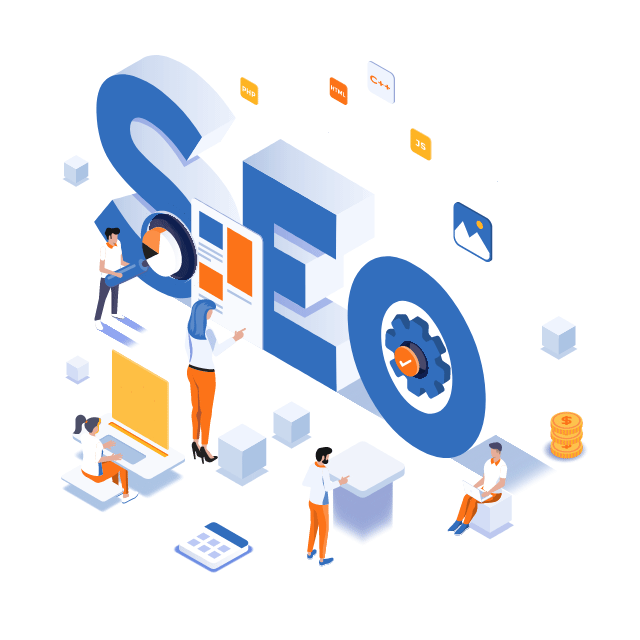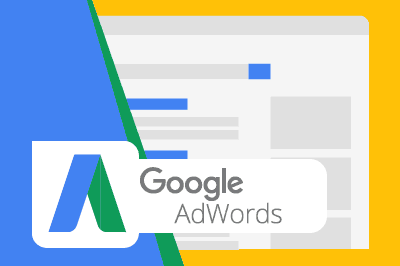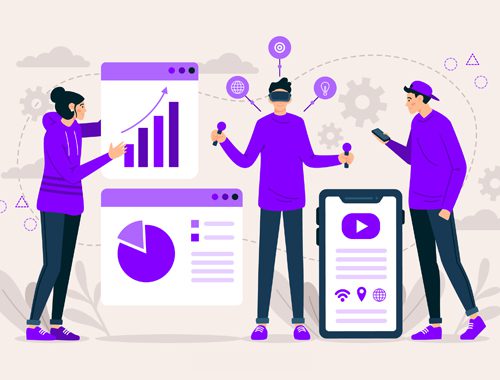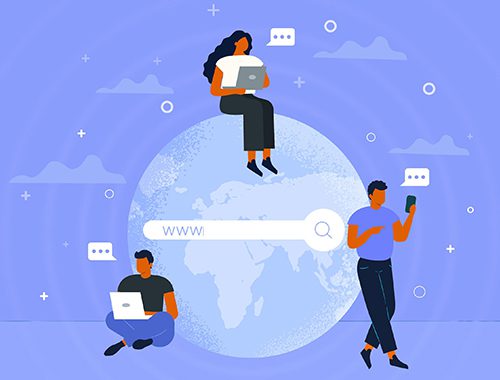Unlocking The Power Of Digital Marketing: A Comprehensive Guide
We appreciate the difficulty of enhancing your brand’s online presence. The internet is an expansive space, and making an impact can feel like voicing out in a storm. Yet, you’re not solitary in facing this test.
We found out that an astounding 9.1% of company budgets are allotted for digital marketing in regions like North America and Europe—an enormous input of funds and labour invested in making businesses visible on screens.
That’s why we’ve compiled our knowledge to produce “Mastering the Art of Digital Marketing: A Detailed Guide.” It’s saturated with understanding, from starting your SEO journey to becoming proficient in handling social media advertising—all explicated without any complicated phrases.
If you’re eager about drawing more attention (and clicks) towards your business, be prepared for some priceless advice that could truly create a significant difference. Feeling geared up for a change? Let’s get started!
Key Takeaways
- Digital marketing uses tools like the internet, social media, and email to share messages about products or services. It helps brands reach more people online without spending too much money.
- Key strategies in digital marketing include SEO (to rank higher on search engines), social media marketing (to engage with audiences on platforms they use), email marketing (for direct communication with customers), and PPC advertising (where businesses pay for each click on their ads).
- Businesses can save money using digital marketing instead of traditional ads. For every pound spent on PPC advertising, the return is two pounds. Email campaigns can bring back £38 for every £1 spent.
- Staying up to date with changing trends and measuring the success of campaigns are big parts of digital marketing. Tools and data help businesses see what works best.
- Content that speaks directly to an audience boosts engagement and sales. Personalised approaches lead to better conversion rates, making it important for businesses to know their audience well.
What is Digital Marketing?
Digital marketing is all about using online tools to share our messages. We tap into the magic of the internet, social media, emails, and websites to talk about our products or services.
It’s like opening a shop in every corner of the world without leaving home. From writing blogs that show up on Google to sending out tweets, it’s how we connect with folks far and wide.
We’ve tried different ways to grab attention online. SEO helps our website get noticed by search engines. Social media lets us chat directly with customers. And let’s not forget email – it’s like sending a personal invite to check out what we offer.
Each method plays its part in drawing people in and keeping them interested. Through digital marketing, we reach more eyes and ears than ever before – without spending heaps of money.
Key Benefits of Digital Marketing
Digital marketing lets us talk directly to our crowd, where they spend a lot of time—online. With clever strategies, we get more eyes on our brand and save a pretty penny while doing it.
Targeted Audience Reach
We know how to hit the mark with our audience. With digital marketing, we can really get to know who we’re talking to. We look at what people like, where they hang out online, and even their age or hobbies.
This means we can chat with them in a way that feels right for them.
63% of folks start shopping online… That’s a big deal! It shows us just how key it is to reach out through digital channels. We make sure our messages are spot on, so they strike a chord with the right crowd.
Digital channels are ace for getting up close and personal in ways other types don’t allow. By keeping an eye on how our targeted ads perform, we learn heaps about what works and what doesn’t, fine-tuning as we go along.
This leads to happier customers who stick around longer because they feel heard and valued.
Increased Brand Visibility
We see a big plus with digital marketing. It makes more people know our brand. Look at how Google gets 8.5 billion searches every day and Facebook has over 2.11 billion users popping in daily too! That’s huge, right? So when we put money into search ads, our brand pops up more on Google.
This way, loads of eyes land on us.
Social media is another ace for getting noticed. Posting often and sharing videos gets us talking to more folks out there. Speaking of videos, did you know 87% of marketers found they sold more stuff thanks to video content? That’s because videos draw people in and help them see what we’re all about – boosting our visibility like nothing else!
Cost-effectiveness
Moving forward from brand visibility, we should discuss the cost-saving benefits of digital marketing. It’s common knowledge that advertisements in newspapers and television can be expensive.
Yet, the landscape changes with digital marketing offering more affordable avenues. Back in 2023, businesses across North America and Europe allocated roughly 9.1% of their overall income to digital advertising.
This strategy is not just cost-effective but also yields favourable outcomes.
For every pound invested in PPC (Pay-Per-Click) advertising, we receive £2 in return – a substantial 200% ROI (Return On Investment)! Moreover, the profits extend with email campaigns, wherein for each £1 expended, we witness an average payback of £38.
Why not appreciate it? Digital marketing significantly reduces costs unlike other strategies – a decrease in expenditure on print ads and an increase in the surplus.
Higher Conversion Rates
We’ve seen firsthand that digital marketing can really turn things around for businesses. Let’s talk numbers—traditional marketing gets a conversion rate of about 1.7%, right? But toss in some online magic, and this number jumps to 9.9%.
That’s not just better; it’s through the roof better. Imagine talking to ten people and almost one buys from you because of your online efforts. Now, that’s something.
PPC advertising is another game changer with its 200% ROI promise. Think about it like this: Every pound spent brings back two more in your pocket. And then there’s email marketing—an oldie but goodie—bringing home an average of £42 for every £1 spent! These are not just numbers; they’re the kind of results we’ve watched businesses achieve when they get their digital campaigns right.
Personalisation makes all the difference.
Yes, we’re talking tailoring content so it speaks directly to your audience… and boy, does it work wonders for engagement and sales growth! Using data analysis leads us straight to what our customers enjoy most, allowing us to create offers they can’t ignore.
The result? More clicks, more sales—a dream come true for any business owner aiming for higher conversion rates.
Major Types of Digital Marketing
Digital marketing covers many exciting areas. We can explore search engine optimisation, social media marketing, and email campaigns that reach the right people at the right time…
Plus, there’s pay-per-click advertising which can really get your brand noticed!
Search Engine Optimisation (SEO)
Search Engine Optimisation, or SEO, is key for boosting our website’s visibility. It helps us rank higher in search engine results. Higher rankings mean more organic traffic to our site.
In fact, the first five links on a search engine results page (SERP) get 53% of all clicks!
We use various techniques like on-page and off-page SEO to improve our ranking. This includes keyword research, link building, and using meta tags. Tools from Semrush can help us with these tasks too.
Local SEO also plays a big part if we want to reach customers nearby. Overall, good SEO opens doors for global reach and helps people find what we’re offering online!
Social Media Marketing
Social media marketing connects businesses with their target audiences. It happens on platforms like Instagram, Facebook, Twitter, LinkedIn, and TikTok. With over 5 billion social media users around the world, the reach is huge! We create content that grabs attention using visual appeal and storytelling.
This makes it easier for us to engage our audience.
We need to post consistently to keep our followers interested and build trust. Tools from Semrush help automate our posts and track how well they perform. Social media analytics give us insights into what works best.
This allows us to improve our strategy and connect even better with our audience!
Email Marketing
Moving from social media marketing, we find ourselves at the exciting door of email marketing. This form of digital advertising is powerful and efficient. It allows us to connect with our audience directly in their inboxes.
Email campaigns can be a game changer. Did you know the average return on investment (ROI) for email marketing is $38 for every £1 spent? That’s incredible! Personalised messaging boosts open rates.
Many consumers prefer emails for business chats—about 72% actually do. We can use effective segmentation to send targeted messages based on who our customers are, what they like, and how they shop.
Automated marketing helps us save time and streamline our efforts. It makes reaching out easy while ensuring that we keep engaging with potential customers—focusing on those truly interested rather than just chasing numbers.
When we build an engaged email list, we’re not just collecting addresses; we’re creating connections that matter!
Pay-Per-Click (PPC) Advertising
Pay-Per-Click (PPC) Advertising is a fun way to reach people online. It’s simple: businesses pay every time someone clicks on their ad. We often see PPC ads on Google Ads or social media sites.
This method helps us connect with our audience right away.
We love that PPC campaigns can give us great results. Seriously, some even show a 200% return on investment (ROI). That means for every pound spent, we can get two back! Plus, we can track how well these ads perform in real-time.
This data lets us make smart choices and adjust our strategy quickly.
Targeted ads mean less waste of money and effort too! Instead of guessing who might be interested, we can reach the right people directly. In the future, trends like AI integration could change how we do this even further.
So, keep an eye out for what’s next in PPC!
Overcoming Digital Marketing Challenges
Digital marketing can throw some curveballs our way. Trends change fast, and measuring returns is tricky too. But we can learn to adapt and improve! So why not keep reading for tips on tackling these challenges?
Adapting to Constantly Changing Trends
Adapting to changes is vital in digital marketing. The landscape shifts quickly, and we must keep up.
- Continuous algorithm updates impact our online presence. Staying informed about these changes helps us adjust our strategies. It’s like a game of hide and seek—only the rules keep changing!
- Mobile optimisation is now key because over 50% of internet traffic comes from mobile devices. If our websites aren’t mobile-friendly, we risk losing many visitors. After all, no one enjoys zooming in on tiny text!
- Engaging with 4.2 billion social media users worldwide opens new doors for us. This allows us to adjust our marketing strategies and connect better with our audiences.
- Ongoing skill expansion is crucial for digital marketers like us. We need to learn continuously so we can navigate through changes effectively and stay relevant.
- Data-driven strategies are essential for responding to new trends. Using data helps us see what works and what doesn’t, guiding our next steps.
- Setting clear marketing goals keeps us focused amid all the changes around us. Goals act as a roadmap, directing our efforts towards success.
- Creating compelling content remains important as well! Engaging content draws in users and keeps them involved, even when trends shift unexpectedly.
- We should adapt rapidly to challenges in digital marketing and embrace change with open arms (or at least an open mind). Change might seem daunting, but it often brings fresh opportunities!
Measuring Return on Investment (ROI)
We face many changes in digital marketing. Trends shift quickly, and we need to keep up. Measuring return on investment (ROI) becomes our key tool here. It helps us see if our efforts pay off.
Using data-driven insights is vital for ROI analysis. We track many things like traffic by source, returning visitors, and average session duration. These metrics give us a clear view of how well we’re doing.
A PPC campaign can yield an impressive 200% ROI! That’s huge!
Skilled marketing personnel make all the difference too. They help us measure success with tools like EventTracker and analytics software. We need these tools to optimise conversion rates and lead generation strategies as well…
The higher conversion rate in online marketing shows a strong 9.9% lead-to-close rate compared to just 1.7% in traditional methods (can you believe that?). It’s clear that focusing on measuring ROI helps us get better results!
Conclusion
We’ve covered a lot about digital marketing. It’s clear that using strategies like SEO, social media ads, and email marketing can really boost our business. These methods are practical and easy to put into action.
With them, we can reach more people and see better results without spending too much money.
Applying these ideas can lead to big improvements in how we connect with customers. For more tips or help on this journey, continue exploring online resources! Let’s get started and make the most of digital marketing together!
FAQs
1. What is digital marketing?
Digital marketing is how businesses promote their products online. It includes things like social media, emails, and websites to reach customers where they spend time.
2. Why should I use digital marketing for my business?
Using digital marketing helps you connect with more people. You can target specific audiences and measure your success easily—it’s all about getting the right message to the right folks!
3. How can I start with digital marketing?
Starting with digital marketing is simpler than it sounds! Begin by setting clear goals, knowing your audience, and choosing the right platforms—like Instagram or Google—to share your message.
4. What are some common strategies in digital marketing?
Common strategies include content creation (like blogs), email campaigns, social media posts, and search engine optimisation (SEO). Each one helps build relationships with customers while driving traffic to your site!








